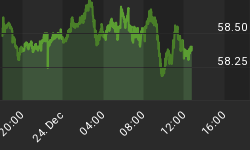It is now August. Many are guessing that the 4th. Quarter will see a positive GDP number this year. The market appears to be factoring in that possibility. Will it really be possible to generate a positive GDP?
Second Quarter earnings results can now be given some thought. Here is what happened on the S&P 500:
- Almost 61% of the S&P 500 beat their estimates.
- 35.5% did better than last year's earnings per share.
- Almost 25% had sales ahead of last year's.
- 75% reported lower sales.
It is hard to find fault with the improvement in earnings per share ... but the fine print says: "75% had lower sales, but 61% beat their estimates."
So ... 60 out of every 100 companies beat their estimates ... but 75 out ofevery 100 had lower sales? How does one have lower sales but beat estimates?
You could do it by under estimating future expectations. In this way, what would normally be a bad result, looks good because you did better than theworse result that you reported "could happen".
Okay, so how could you have lower sales, but better earnings? You would have to cut costs ... cut inventories, layoff, reduce expenses, etc. That works the first time around ... the second time around is very difficult to cut as much on a percentage basis. So, the salvation will have to be an increase in sales during the current and future quarters.
That's the rub. The economy needs an increase in spending by consumer and business end users. We are getting some increases due to government stimulus programs. That can't go on forever without the consumer taking back the spending reins ... or our government will go bankrupt, the Dollar willfall, and interest rates will go up.
So, now we need the real thing ... increased spending by the consumer. We need an increase in demand because people can afford it, not because the government gave a consumer a $4,500 credit so he could buy a car. Christmas is not that far away, and the government will not be giving any consumer subsidies out for buying clothes, appliances,pots & pans.
So, as an investor, that's what you want to be watching for: Reports that indicate consumers and businesses are increasing their spending levels. Recent earning estimates are turning up slightly ... that's a good thing. It would be nice if "lots of increased spending" could happen without big increases in debt levels, because all of the excess debt and leverage has not beenwrung out of the system yet.
If all goes well, and positive expectations bear fruit, then we will see forward economic progress. But, if GDP remains negative in Q4 along with weak consumer spending appears during the holidays, then the market will have a confidence retraction bringing things back to where the true balance is.
Although some earning estimates have turned slightly up, sales have not moved from declining to "increasing". The progress we are making is one of "getting less worse", and granted ... that has to happen first before we get to where things are "good". For now, don't mix the two ... getting less worse is different than getting better, and less worse is economically a lot different than getting better.
Be open minded and consider the real "comparative conditions" relative to time ... sometimes the media tries to "headline" the news to make things lookbetter than they really are.
Take Financials for example. Some media sources have excitedly reported that "Financials are up 273% from the Second Quarter of 2008". Well, the 2nd. quarter of 2008 was negative, so what did the media really mean? Did that 273% improvement mean that things were in the positive ... or almostpositive, or in the negative?
Here is what they could have said, if the media had wanted to use a different time-frame for the same result: They could have said that, "Financials were down 83% from the 2nd. quarter of 2007".
Was it misleading to make things appear as if they were wonderful? Or, was it a good thing to show the optimistic side? Our thinking is that "enough of the numbers should be reported so that someone really understands what is going on". If a person gains 30 pounds, is that good or bad? To answer the question you need to know what their ideal weight should be and how much they weighted before losing 30 pounds. Depending on the answer, they could be grosslyover weight, underweight, or just right.
















